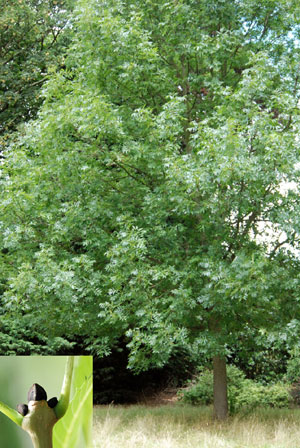Ash dieback

The woodlands blog has reported on the pathogen that causes ash dieback. Jasper has described the nature of the fungus, and Richard has commented on how the problem has developed.
The disease has been variously referred to as
- chalara,
- ash dieback, and
- chalara dieback of ash.
The fungus has an asexual phase, which was formerly known as Chalara fraxinea, hence the name of the disease; the sexual phase of the fungus was then associated with the asexual Chalara - this was called Hymenoscyphus pseudoalbidus. Putting the two together, the fungus was named Hymenoscyphus fraxineus (H.fraxineus). The fungus Hymenoscyphus fraxineus is of Asian origin.
The fungus is a problem not only in the U.K but in various countries across Europe, many trees have been infected. However, research into the nature of the disease continues. One recent paper looked at the spread / impact of the disease in France. They investigated
- Disease severity
- Crown dieback,
- frequency of collar canker
- Density of leaf infected debris in the litter
They looked at the influence of landscape features on
- The establishment of the disease
- The state of the disease two years after first reported
- Subsequent development after several years.
It was found that landscape features had little effect on the initial development of the disease but they did strongly affect its subsequent development. The most important feature being the fragmentation of tree cover in the area.
 Isolated trees or those in hedges were far less affected than trees in a woodland / forest situation. This was found to be due microclimate in the crown of the trees. Trees with a higher crown temperature provided a greater challenge to the development of the pathogen.
Isolated trees or those in hedges were far less affected than trees in a woodland / forest situation. This was found to be due microclimate in the crown of the trees. Trees with a higher crown temperature provided a greater challenge to the development of the pathogen.
It was also clear that the density of ash trees locally had a significant affect. Large number of ash in the area increased disease severity over a distance of several hundred metres. Ash dieback may be less problematic in more open situations where the number of ash trees is limited.
The importance of landscape features in promoting or hampering the dispersal of invasive or pathogenic species has been noted in other work. For example, roads or water courses can act as corridors for species such as Phytophthora spp. because the reproductive structures are dispersed by contaminated water or soil (Jung & Blaschke, 2004). Similarly, infected fallen leaves can also be dispersed by vehicles as has been shown for the horse chestnut leafminer Cameraria ohridella .
For more information on ash dieback and other conditions affecting trees, there is a very informative leaflet available from the RFS here (note : link downloads a PDF file).
Comments are closed for this post.
